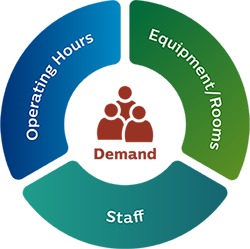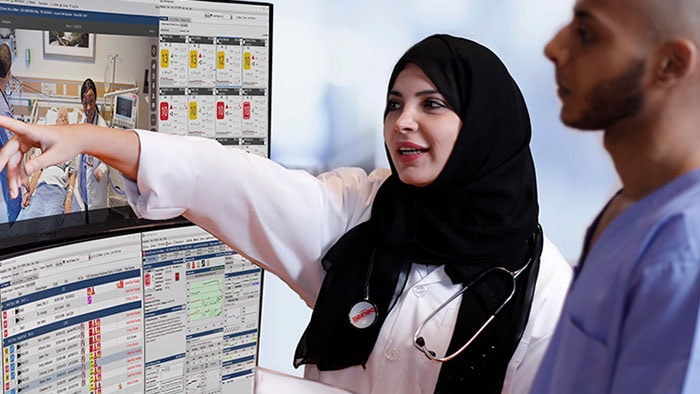How can your hospital prepare for the influx of patients after the initial
COVID-19 crisis period?
The outbreak of COVID-19 has disrupted routine healthcare. Non-urgent care, including imaging procedures, has come to a standstill. The longer the delay, the more this non-urgent care becomes urgent and the greater the backlog of cases. Most of these cases will have to be made up quickly as you restart your routine care. Yet even as you begin to manage this backlog, there will be additional new patients and possible surges in COVID-19 cases that could disrupt the plan. How do you prioritize and merge new patents with your backlog? How do you adapt to the required social distancing in your healthcare facility? Your hospital must not only be prepared to catch up with elective cases, but also become resilient and adaptable to fluctuating care demands.
We’re with you as you prepare for restarting routine care. We have developed modeling tools to help quantify and visualize your potential upcoming imaging care needs as we collaboratively plan for the transition into the ‘new normal’ based on insights from data and experience-based scenarios.
Post COVID-19 patient inflow versus available capacity
It is important to gain insight into the extent of imaging care that has been delayed and still needs to be delivered. You must also anticipate the influx of new patients and determine how this demand can be accommodated with your available capacity in terms of equipment, space, operating hours and care providers.

We begin by reviewing your trends in patient volumes over the past year and through analysis of patient profiles for care on hold. Our consultants then extrapolate an informed volume for the current backlog of care. By plugging these demand assumptions, together with your capacity figures, into our modeling tools, we get a customized insight into the impact of this backlog on your imaging department. At this point we can provide you with various ‘what if’ scenarios by adjusting variables that are flexible, and work with you to determine the best path forward. Please contact us to find out how we can help you prepare and plan for the influx of patients as elective care restarts.
Identifying near-term solutions to cope with the peak in patient inflow
Maintaining the ‘new normal’ may present challenges. With insights into the accumulated imaging backlog and flexibility of parameters surrounding your typical patient flow and capacity, challenges to achieving a smooth and sustainable flow may emerge. We can work with you to visualize solutions that can make the demand for imaging care achievable.
Recent insights
Meet our team

Debbie Slye, MN, RN, ExO Global Lead, Healthcare Operations & Clinical Transformation
Debbie and her team help healthcare organizations drive sustainable transformation by empowering staff to balance demands for patient access, to manage throughput across the enterprise, and to optimize overall clinical and financial outcomes. Using a people-centered and data-driven approach Debbie supports customers to synthesize the results in the current state, envision a future and develop a realistic roadmap to achieve operational and clinical excellence.
You are about to visit a Philips global content page
ContinueRelated services
Learn more about our healthcare transformation services for your organization



